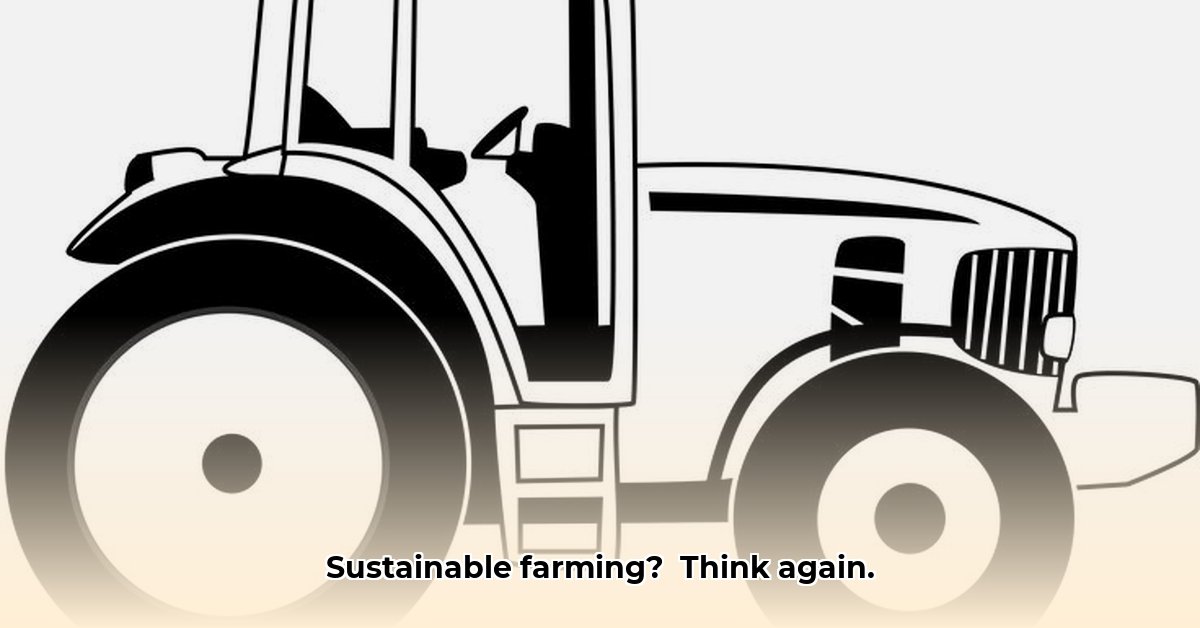
John Deere Tractor Clipart Black and White: A Future Harvested in Sustainability
The iconic image of a black and white John Deere tractor—a symbol of American agriculture—represents more than just heritage; it symbolizes a crucial bridge to sustainable farming. This seemingly simple image highlights a complex challenge: integrating sustainable practices into existing agricultural infrastructure. This article explores the opportunities and challenges in this transition, focusing on the critical role of established brands like John Deere. For more images, check out this John Deere Tractor Cover.
The Green Revolution's Unexpected Ally: Established Brands and Sustainable Farming
Major agricultural equipment manufacturers, like John Deere, are central to sustainable agriculture's future. Their widespread adoption presents both opportunities and challenges. The sheer volume of existing equipment represents significant inertia. Adapting existing infrastructure is far more cost-effective than complete replacement, but requires overcoming technological, economic, and logistical hurdles. Data on the precise scale of this inertia remains limited, but anecdotes abound of farmers facing challenges in integrating new technologies. How can we effectively and sustainably integrate new technologies into this existing infrastructure? This question forms the core of our inquiry.
The Bumpy Road to Sustainable Farming: Challenges We Face
The path towards sustainable agriculture is fraught with challenges. Financial constraints are a major obstacle, particularly for smaller farmers who lack resources for technology upgrades. The necessary technological expertise is often lacking, creating a knowledge gap that hinders the effective adoption of sustainable practices. Additionally, complex regulatory frameworks can create further barriers, adding bureaucratic hurdles to an already complicated process. These challenges highlight the crucial need for collaboration between farmers, manufacturers, governments, and research institutions.
Seizing Opportunities: Innovation in Action
Despite the challenges, significant opportunities exist. Existing infrastructure can be adapted, rather than entirely replaced, through the integration of smart technologies. Precision farming techniques, guided by GPS and AI, offer enhanced efficiency and resource optimization. Innovations in water management, soil health, and crop monitoring present exciting possibilities, with companies like John Deere making substantial investments in these areas. The successful integration of these technologies demonstrates the potential for a more sustainable agricultural future. How quickly these innovations are adopted will determine the speed of progress.
A Team Effort: Collaboration for a Sustainable Harvest
Achieving sustainable agriculture requires a collaborative approach. Each stakeholder plays a vital role:
| Stakeholder | Short-Term Goals | Long-Term Vision |
|---|---|---|
| Farmers | Explore government grants; pilot precision technologies | Full adoption of sustainable practices; investment in sustainable equipment |
| Manufacturers (e.g., John Deere) | Invest in R&D for eco-friendly equipment; industry partnerships | Completely sustainable product lines; equipment upgrade programs |
| Governments | Provide financial incentives; regulatory simplification | Stronger environmental standards; funding for research projects |
| Research Institutions | Develop & test sustainable farming methods; data sharing | Best practice dissemination; data-driven decision-making promotion |
This unified effort is essential for a successful transition. The seemingly simple clipart of a John Deere tractor represents not only tradition but also the potential for a brighter future.
Charting a Course for the Future: Sustainability on the Horizon
The long-term goal is a profitable and environmentally responsible farming future. Success hinges on the collective commitment of manufacturers to adapt, governments to support, and farmers to embrace change. While this transformation will require significant investment and adjustments, the potential rewards—a sustainable and efficient agricultural system—make it a worthwhile endeavor. John Deere, and similar companies, are crucial in this evolution. Their ongoing engagement shapes the trends of tomorrow. Ongoing research will refine our understanding, paving the way for a truly greener tomorrow.
Key Takeaways:
- Retrofitting existing equipment is a more fiscally responsible approach to sustainable agriculture than complete replacement.
- Technological advancements in AI and automation present both opportunities and challenges.
- Successful implementation necessitates addressing financial, technological, and regulatory barriers.